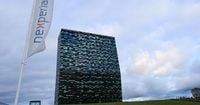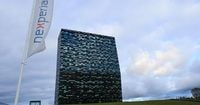In a dramatic escalation of global technology tensions, the Dutch government’s recent seizure of Nexperia—a chipmaker rooted in the Netherlands but owned by China’s Wingtech Technology—has sent shockwaves through the world’s semiconductor supply chain, raising alarms from Beijing to Detroit. The standoff, which erupted on September 30, 2025, when Dutch authorities invoked their rarely used Goods Availability Act to take control of Nexperia, has quickly become a flashpoint in the ongoing struggle for technological dominance and national security between China, Europe, and the United States.
The Dutch government cited national security concerns as the impetus for its move, arguing that Nexperia’s governance under Wingtech “posed a threat to the continuity and safeguarding on Dutch and European soil of crucial technological knowledge and capabilities.” According to the Associated Press, the Dutch Ministry of Economic Affairs executed the takeover precisely because it feared the loss of sensitive know-how and strategic capabilities to foreign hands, particularly those with close ties to the Chinese state.
Nexperia, though headquartered in the Netherlands, has been a subsidiary of Wingtech since its $3.6 billion acquisition in 2018. Wingtech itself is partially state-owned, a fact that has only deepened Western suspicions about the real locus of control and the potential for sensitive technologies to be siphoned off to China. The Dutch government’s actions, while rare, reflect a growing trend among Western nations to tighten oversight of key technology assets, especially those with military or dual-use potential.
The immediate fallout was swift and severe. In late October 2025, Nexperia’s Chinese unit announced that its Netherlands headquarters had abruptly suspended shipments of wafers—the essential building blocks for semiconductor chips—to its factory in Dongguan, China. This move, as reported by the Associated Press, raised urgent concerns about the company’s ability to deliver finished semiconductors, which are vital components for automakers worldwide.
China did not take the Dutch action lying down. In a tit-for-tat response, Beijing blocked shipments of chips from Nexperia’s Dongguan plant, halting the flow of critical components not just to Europe but to global customers. The Chinese Commerce Ministry, in a strongly worded statement on November 4, 2025, laid the blame squarely at the feet of the Netherlands, declaring, “That has created turmoil and chaos in the global semiconductor supply chain. The Netherlands should bear full responsibility for this.”
The reverberations were felt far beyond the corridors of government. Global automakers, including industry giant Ford Motor, quickly sounded the alarm, warning that China’s export restrictions on Nexperia’s semiconductors could disrupt car manufacturing on a worldwide scale. With modern vehicles increasingly reliant on sophisticated chips for everything from engine management to navigation and safety systems, any hiccup in the supply chain can spell disaster for production schedules and, ultimately, consumers.
Amid this escalating standoff, the Netherlands moved to install new leadership at Nexperia, replacing the company’s Chinese CEO, Zhang Xuezheng, with interim CEO Stefan Tilger. The leadership change was seen by many observers as an attempt to reassure Dutch and European stakeholders that the company’s strategic direction would remain under local control—at least for the time being.
Yet the roots of the crisis run deeper than a single corporate takeover. In late 2024, the United States had already placed Wingtech Technology on its so-called “entity list,” subjecting it to strict export controls for allegedly acting against U.S. national security interests. By late September 2025, the U.S. had expanded those restrictions to include Wingtech’s subsidiaries, Nexperia among them. This layered web of export bans and blacklists has made it increasingly difficult for Chinese technology firms to access the advanced equipment and know-how they need to compete on the global stage.
The geopolitical chess game took another turn following a high-profile meeting in late October 2025 between U.S. President Donald Trump and Chinese leader Xi Jinping in South Korea. According to statements from the White House, China agreed to ease its export ban on Nexperia semiconductors as part of the latest trade truce between Washington and Beijing. While the move was welcomed by many in the business community, few believe it represents a lasting solution to the underlying tensions.
European officials have also been working feverishly behind the scenes to defuse the crisis. On November 3, 2025, EU trade commissioner Maroš Šefčovič posted on X (formerly Twitter) that talks involving China and the Netherlands regarding Nexperia were “progressing,” adding that “work continues towards lasting stability.” The Netherlands, for its part, has expressed a willingness to seek a “constructive solution” with Chinese authorities. This was underscored by a telephone conversation in October 2025 between Dutch economic affairs minister Vincent Karremans and China’s commerce minister Wang Wentao, after which both sides indicated a desire to find common ground.
For now, some of the immediate bottlenecks appear to be easing. By November 4, 2025, China had allowed exports from Nexperia’s Dongguan plant to resume, a move that has provided at least temporary relief to anxious automakers and electronics manufacturers. But the episode has laid bare the fragility of the global semiconductor supply chain and the extent to which it is vulnerable to political maneuvering and national security anxieties.
As the world becomes ever more dependent on semiconductors, the stakes of such disputes are only set to rise. Chips are the lifeblood of modern industry, powering everything from smartphones and laptops to electric vehicles and industrial robots. Any disruption, even a short-lived one, can have cascading effects across the global economy.
What’s next for Nexperia and its stakeholders remains uncertain. The Dutch government’s invocation of the Goods Availability Act—a legal tool almost never used—signals a willingness to take extraordinary measures to protect what it sees as strategic assets. Meanwhile, China’s forceful response and the U.S.’s ongoing export controls suggest that the semiconductor sector will remain a battleground in the broader contest for technological supremacy.
As talks continue between Beijing, The Hague, Brussels, and Washington, the world’s automakers and tech firms are watching closely, hoping for stability but preparing for more turbulence. The Nexperia saga is a stark reminder: in the high-stakes world of semiconductors, a single government decree can send shockwaves across continents, upending industries and altering the balance of global power.


